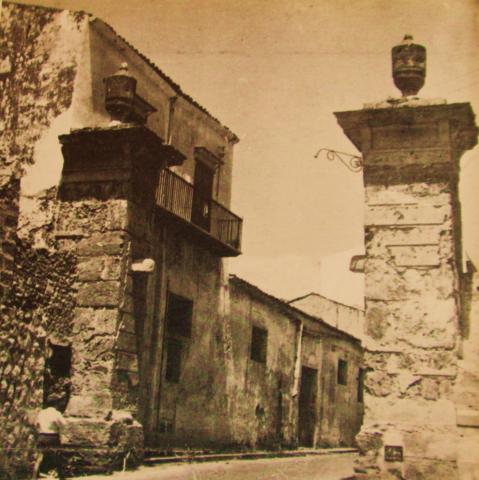With the construction of the Cathedral, commissioned by King Guglielmo II, the town began to expand in the front part of the apses with the Ciambra district, the residence of the monarch's servants. Subsequently, in the early 15th century, the original nucleus developed with the 'contrade' (districts) of Pozzillo, also called San Vito, and Carrubella. In the 16th century, the city expanded even more with the districts of Arancio and Turbe.
Monreale in the 17th century was enclosed within city walls, built by Archbishop Girolamo Venero in 1624 to safeguard the population from the plague that was devastating nearby Palermo. Today, almost nothing remains of the walls, but as a testament to that era, the PILLARS OF THREE OF THE SIX GATES are still visible, symmetrically arranged. The gates, even though they do not display the splendid magnificence of the cathedral and the cloister, contribute to promoting the image of Monreale, which with its immense historical-artistic heritage, can offer visitors alternative itineraries of high cultural value.
Porta di SAN CASTRENZE, named after the archbishop who promoted its construction in 1624, later called Venero, it led towards the countryside. Remains of the degraded pillar on the right, with a marble plaque crowned by three crests, the first of which depicts an 8-pointed star.
Porta VERGHE: dating back to 1624, located west of Corso Pietro Novelli, leading to the current road heading towards Pioppo.
Porta SAN MICHEL, on the opposite side of the town, built-in 1624, named after a nearby church that already existed in the late Middle Ages.
Porta CARRUBELLA opposite to the Porta San Michele. Today, the right pillar remains, concluding the homonymous street, entirely leaning against the corner of the church of S. Giovanni.
The fifth gate was that of the ARCHBISHOP'S PALACE, behind the apses of the cathedral, through which one descended to the Capuchin convent and the gardens of Conca d'Oro. Upstream of the city, another gate existed high up on the current Via Fontana dell'Orto. Built almost simultaneously, each of the six gates has its own history.
Porta CAPPUCCINI, following the construction of the convent from which it takes its name, it was built on a previous medieval gate. Existing until the mid-19th century, today only the remains of a pillar remain.
